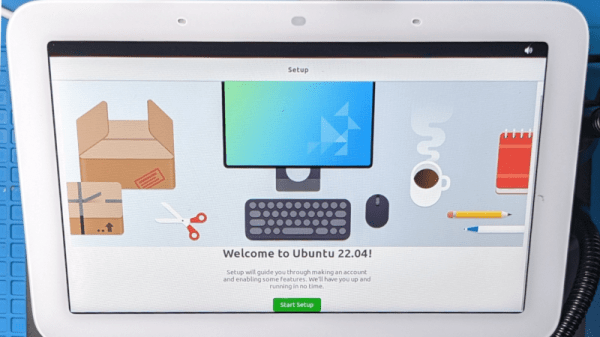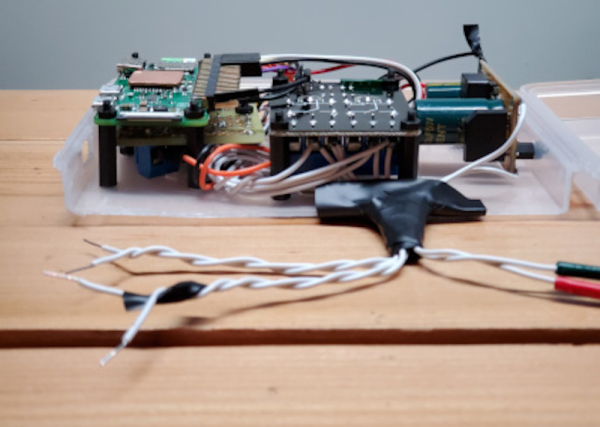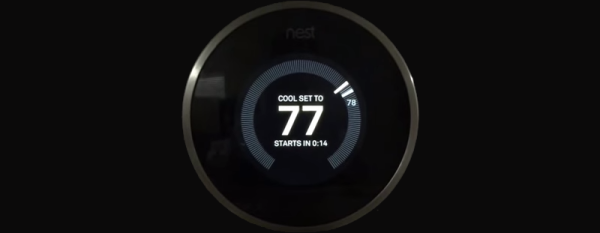Fix stuff, earn big awards? Maybe, if this idea for repair bounties takes off. The group is dubbed the FULU Foundation, for “Freedom from Unethical Limitations on Users,” and was co-founded by right-to-repair activist Kevin O’Reilly and perennial Big Tech thorn-in-the-side Louis Rossman. The operating model works a bit like the bug bounty system, but in reverse: FULU posts cash bounties on consumer-hostile products, like refrigerators that DRM their water filters or bricked thermostats. The bounty starts at $10,000, but can increase based on donations from the public. FULU will match those donations up to $10,000, potentially making a very rich pot for the person or team that fixes the problem.
nest13 Articles
Breaking Google Nest Hub’s Secure Boot
[frederic] tells a story about their team’s hack of a Google Nest Hub (2nd generation) — running Ubuntu on it, through bypassing Google’s boot image signature checks. As with many good hacks, it starts with FCC website pictures. Reverse-engineering a charger and USB daughterboard pin-out, they found a UART connection and broke it out with a custom adapter. With a debug console and insights into the process, they went on hacking, slicing through hardware and software until it was done with.
This story gives plenty of background and insight into both the code that was being investigated, and the way that attack targets were chosen. Through fuzzing, they found a buffer overflow in the bootloader code that could be triggered with help of a non-standard block size. USB flash drives tend to have these hard-coded, so they built a special firmware for a Pi Pico and shortly thereafter, achieved code execution. Then, they hooked into uboot functions and loaded Ubuntu, bypassing the boot image signature checks.
This is a wonderful documentation of a hacking journey, and an exciting read to boot (pun intended). The bug seems to have been patched for half a year now, so you probably can’t flash your Google Nest into Ubuntu anymore. However, you might be able to run an up-to-date Linux on your Amazon Echo.
We thank [Sven] for sharing this with us!
Old Thermostat Gets Smarts
A smart thermostat is nothing new. But making one built a decade or more ago takes a few tricks. If you want to upgrade your thermostat without replacing it, [geektechniquestudios] shares their solution using a Raspberry Pi Zero to smarten up that dumb controller.
The hardware is decidedly simple: just a Pi Zero and a pair of relays. The relays act as button presses to the old thermostat. The software, though, is decidedly complex. There’s a React server and a Redis database along with some other bits and pieces.
Add Nest Functionality To Your Thermostat For $5
The Nest Thermostat revolutionized the way that people control the climate in their homes. It has features more features than even the best programmable thermostats. But, all of the premium features also come at a premium price. On the other hand, for only $5, a little coding, and the realization that thermostats are glorified switches, you can easily have your own thermostat that can do everything a Nest can do.
[Mat’s] solution uses a Sonoff WiFi switch that he ties directly into the thermostat’s control wiring. That’s really the easy part, since most thermostats have a ground or common wire, a signal wire, and a power wire. The real interesting work for this build is in setting up the WiFi interface and doing the backend programming. [Mat’s] thermostat is controlled by software written in Node-RED. It can even interface with Alexa. Thanks to the open source software, it’s easy to add any features you might want.
[Mat] goes through a lot of detail on the project site on how his implementation works, as far as interfacing all of the devices and the timing and some of the coding problems he solved. If you’ve been thinking about a Nest but are turned off by the price, this is a great way to get something similar — provided you’re willing to put in a little extra work. This might also be the perfect point to fall down the home automation rabbit hole, so be careful!
Continue reading “Add Nest Functionality To Your Thermostat For $5”
Red Bricks: Alphabet To Turn Off Revolv’s Lights
Revolv, the bright red smart home hub famous for its abundance of radio modules, has finally been declared dead by its founders. After a series of acquisitions, Google’s parent company Alphabet has gained control over Revolv’s cloud service – and they are shutting it down.
Customers who bought into Revolv’s vision of a truly connected and automated smart home hub featuring 7 different physical radio modules to connect all their devices will soon become owners of significantly less useful, red bricks due to the complete shutdown of the service on May 15, 2016.
Continue reading “Red Bricks: Alphabet To Turn Off Revolv’s Lights”
The Internet Of Broken Things (or, Why Am I So Cold?)
Although the Internet of Things (IoT) is a reasonably new term, the idea isn’t really all that new. Many engineers and hackers have created networked embedded systems for many years. So what’s different? Two things: the Internet is everywhere and the use of connected embedded systems in a consumer setting.

Like anything else, there’s a spectrum of usefulness to IoT. Watching The Expanse, the other day (which is not a bad show, by the way), I noticed that if you had the right IoT lights, you could run an app that would change your lighting to suit the show in real-time. I don’t have those lights, but I suppose when the action moves to a dark sub-basement, your lights dim and when you are in a space ship’s reactor room, they turn red, and so on. Fun, but hardly useful or life-changing.
On the other hand, there are some very practical IoT items like the Nest thermostat. It might seem lazy to want to monitor and control your thermostat from your tablet, but if you are frequently away from home, or you have multiple houses, it can be a real positive to be able to control things remotely. With the recent blizzard on the U.S. east coast, for example, it would be great to turn on the heat in your weekend cottage 150 miles away while you were still at work or home. However, the Nest recently had a hiccup during an upgrade and it has made many of their customers mad (and cold). I’ll get back to that, in a minute. First, I want to talk about the problems with deploying something that will be in many varied environments (like people’s homes) that controls something real.
Continue reading “The Internet Of Broken Things (or, Why Am I So Cold?)”
Control Nest Devices With Amazon Echo
[ZPriddy] was looking for a way to control his Nest thermostats with Amazon Echo. He didn’t want to settle for using AWS or some other hosted service. [ZPriddy] wanted something that he could host and manage completely on his own. The end result is what he calls EchoNestPy.
[ZPriddy] started by learning how to use the Alexa Skills Kit (ASK). ASK is the official SDK that allows enthusiasts to add functionality to their Amazon Echo. Unfortunately for [ZPriddy], most of the example code he found was designed to be used on Amazon Lambda, but that didn’t stop him. After finding a few examples of Amazon Echo requests and responses, he was on his way.
[ZPriddy] chose to implement a simple web server using Flask. The web server listens for the Amazon requests and responds appropriately. It also Oauth2 authentication to ensure some level of security. The server is capable of synchronizing the temperature of multiple Nest devices in the same home, but it can also increment or increment the temperature across the board. This is accomplished with some simple voice commands such as “Tell Nest that I’m a little bit chilly”. If you like Amazon Echo hacks, be sure to check out this other one for controlling WeMo devices. Continue reading “Control Nest Devices With Amazon Echo”
















